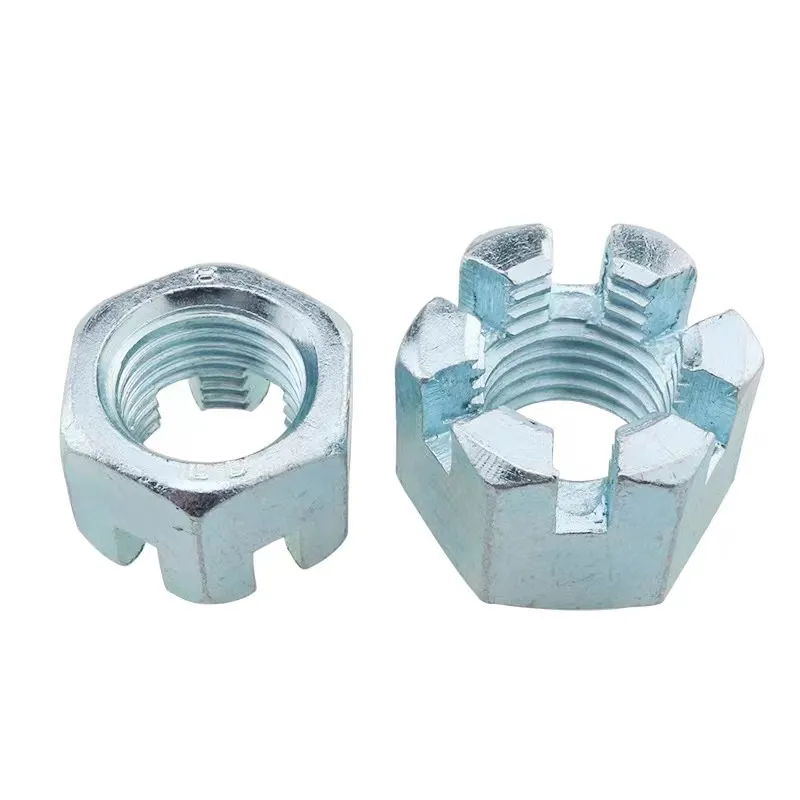

Understanding the Benefits and Applications of Serrated Flange Lock Nuts in Engineering
Nov . 16, 2024 10:16 Back to list
Understanding the Benefits and Applications of Serrated Flange Lock Nuts in Engineering
Understanding Serrated Flange Lock Nuts A Comprehensive Overview
Serrated flange lock nuts are an integral component in the realm of mechanical fastening, providing a reliable solution for high-vibration applications. These specialized nuts combine the benefits of a standard hex nut with a serrated flange that enhances grip and stability, making them a preferred choice in various industries, from automotive to construction.
Design Features
The distinguishing characteristic of serrated flange lock nuts is their unique design, which includes a flange with serrations on its surface. This serrated edge acts like a locking mechanism, preventing the nut from loosening under dynamic loading conditions. When tightened against a surface, the serrations dig into the material, creating a robust frictional grip. This feature is particularly beneficial in environments where vibration is present, as it minimizes the risk of loosening that can lead to mechanical failure.
In addition to their locking capabilities, the flange also distributes the load over a larger surface area, which reduces stress on the bolt and the connected components. This design not only enhances the durability of the assembly but also protects the underlying materials from damage that can occur with standard nuts.
Applications
serrated flange lock nut

Serrated flange lock nuts are widely used in applications requiring secure fastening without additional locking devices or washers. Common applications include automotive assemblies, machinery, and structural frameworks. In vehicles, for instance, these nuts are often used in engine and suspension systems where vibrations are prevalent. Their ability to maintain a tight grip ensures that critical components remain securely attached, contributing to overall safety and performance.
Furthermore, the ease of installation is a significant advantage. Since they don’t require any extra locking tools or devices, serrated flange nuts can be installed quickly and efficiently, reducing assembly time and costs in manufacturing and construction.
Material and Coating
Serrated flange lock nuts are made from various materials, including steel, stainless steel, and alloy materials, depending on the requirements of the specific application. The choice of material affects the nut's strength, corrosion resistance, and weight. Additionally, many serrated flange nuts are coated with materials like zinc or nylon to enhance their corrosion resistance and reduce friction during installation.
Conclusion
In summary, serrated flange lock nuts serve as a versatile and effective solution for securing components in high-vibration environments. Their unique design, which combines the functionalities of a standard nut with a locking flange, reduces the risk of loosening while distributing loads more evenly. With applications in numerous industries and the ability to streamline assembly processes, these nuts are essential components for ensuring the integrity and safety of mechanical systems. As technology and engineering continue to advance, the importance of utilizing efficient and reliable fastening solutions, such as serrated flange lock nuts, remains paramount. Whether you are involved in machinery manufacturing or construction, understanding the value of these specialized fasteners can significantly enhance operational efficiency and product reliability.
Latest news
-
High-Strength Hot-Dip Galvanized Bolts-Hebei Longze|Corrosion Resistance&High Strength
NewsJul.30,2025
-
Hot Dip Galvanized Bolts-Hebei Longze|Corrosion Resistance&High Strength
NewsJul.30,2025
-
Hot Dip Galvanized Bolts - Hebei Longze | Corrosion Resistance, High Strength
NewsJul.30,2025
-
High-Strength Hot Dip Galvanized Bolts-Hebei Longze|Corrosion Resistance, Grade 8.8
NewsJul.30,2025
-
Hot Dip Galvanized Bolts-Hebei Longze|Corrosion Resistance,High Strength
NewsJul.29,2025
-
High-Strength Hot Dip Galvanized Bolts - Hebei Longze Metal Products Manufacturing Co., Ltd.|corrosion resistance&high strength
NewsJul.29,2025

